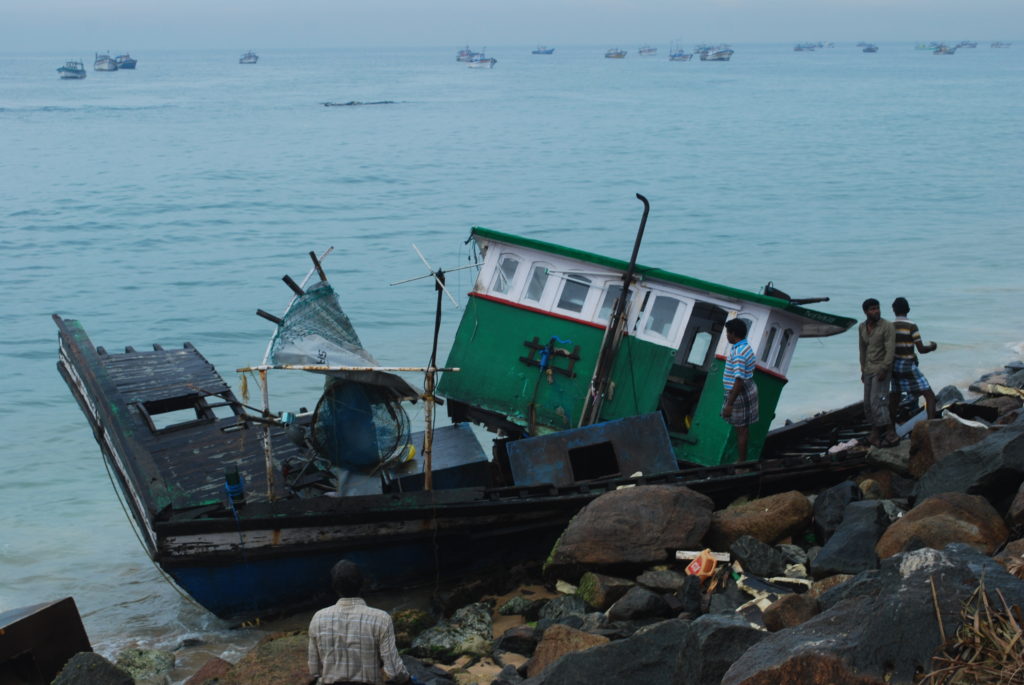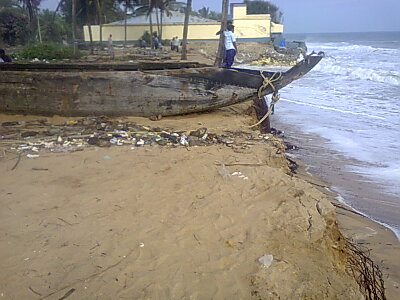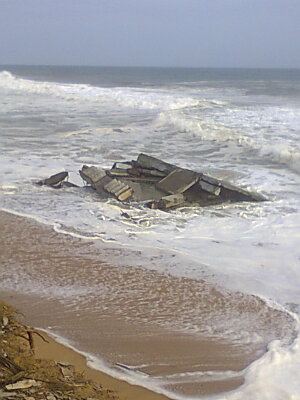By J.Vincent Jain, Chief Executive, Association of Deep Sea Going Artisanal Fishermen, Member IEEE Madras Section.
- 1. Introduction

- The fishery is one of the most vulnerable sectors and fishing is an occupation which is ranked as one of the dangerous occupations in the world. Over 24,000 fishermen die every year. More than 50% of the world’s population lives within 60km of the coastline. Billions of people are depending on the scarce marine resources, they are depending on the fishermen and the fish that they bring home. A lost vessel and a lost fisherman have a vital impact on the coastal community[1]. Marine fisheries are contributing to the food security of the country by providing cheap and accessible protein to the mass. Due to the poor infrastructure facilities in fish landing centres, fishing harbours and fish markets, the world is facing heavy post harvest losses in this sector. Post-harvest fish losses are a major concern and occur in most fish distribution chains throughout the world. Not only do losses constitute lost income to fishers, processors and traders but they also contribute to food insecurity – a loss of fish means less fish available for the consumer[2].Having said that the issues raised above are also applicable in the Indian context and hence the need for a comprehensive package for reaching out for concrete and practical solutions is imminent and necessary.
2. Indian Scenario

There are about 4 million fisher folk populations comprising in 864,550 families living in 3,288 marine fishing villages with a coastline of 8,129 km. The total fleet size of 1,94,490 crafts comprising 72,559 (37.3%), mechanized crafts, 71,313 (36.7%t) motorized crafts and 50,618 (26%) non-mechanized crafts[3]. It indicates that 1,43,872 (74%) of the fishing crafts depend on fossil fuel either on diesel, kerosene, petrol and related lubricants. There is no effective communication system for the fisher people to communicate when they are in distress. There is no safety for their life at sea. Boats with boat, boat with ship collisions are very common. The recent example is the ship Enrica Lexie[4] with St.Antony boat and the ship OEL Freedom[5] with St.Mary boat. There are so many complex acts, rules, regulations; formalities which are cumbersome and not fully known to the fishermen and which often attract trouble. Though there are fishing harbours, fish landing centres and fish markets many are still wanting for the basic necessary renovation and modernization. The pre-harvest and post harvest facilities are not on par with international standards at all. This factors like spoilage and unhealthy practices adversely affects the income pattern of the fisherfolk. The available transporting system for fish is also not sufficient and the road facilities are not adequate and motorable in many areas.
3. EEE and ICT
As of today the role of EEE in fisheries is very minimal in India, but the scope of the application and usage of EEE are very vast and could turn out to be the solutions for many present day issues of fishermen like emergency rescue, safety of the fishing boats, identification of fishing grounds, e-fisheries etc. Information and Communication Technology (ICT) also can play a pivotal role in the transformation of the fishing communities into a knowledge-based society – it is the most cost-effective tool for connecting people and businesses, and it may be the best platform from which access to primary services to improve the quality of life of fishermen.
4. Some of the Identified area for intervention
- System for a ‘Fish Marketing Intelligence System’ (F-MIS)
- System for management of Fishery Information System (M-FIS)
- Safety of Fishermen at Sea
- Mechanism to deal with disaster risks
- System for creating and monitoring on-board Electronic logbook of Fishing crafts
- System for maintaining Electronic Register, Electronic Receipt and payment
- System for maintenance of Field-based fishing Craft Registration system
- Creating a permanent mechanism for Monitoring of fishing boats voyage
- Developing a wearable “Man overboard” alert mechanism
- Fishing ground/resource mapping and dissemination
- Information collection of waste at sea, documentation on best and fishing practices
- Solar power for the auxiliary functions for vessels and other shore based activities
- Solar battery Bank
- Solar power operated fishing boat, fish transport 3 wheeler, refrigeration system
- Creating Smart Fisherman Entrepreneurship-(E)
5. Conclusion

Understanding the importance of the sector and based on the development of Science and Technology, intervention of IEEE is very much relevant and the need of the times for the sector and the fishing communities. There is ample scope for the various Scientific Research Institutions, Corporate Companies, Government, National and International agencies and groups, Community Based Organizations and other stake holders in the sector for the intervention of ICT and Fisheries Educational Centers on one hand and the provision of infrastructures for responsible fisheries towards livelihood protection on the other hand.
[1] http://www.safety-for-fishermen.org
[2] http://www.fao.org/docrep/014/i2241e/i2241e.pdf
[3] CMFRI, National Marine Fisheries Census, 2010
[4] http://www.ndtv.com/article/south/fishermen-killing-italian-ship-enrica-lexie-sails-off-kerala-waters-206810
[5] http://www.deccanchronicle.com/131025/news-current-affairs/article/owners-singapore-vessel-oel-freedom-move-high-court

